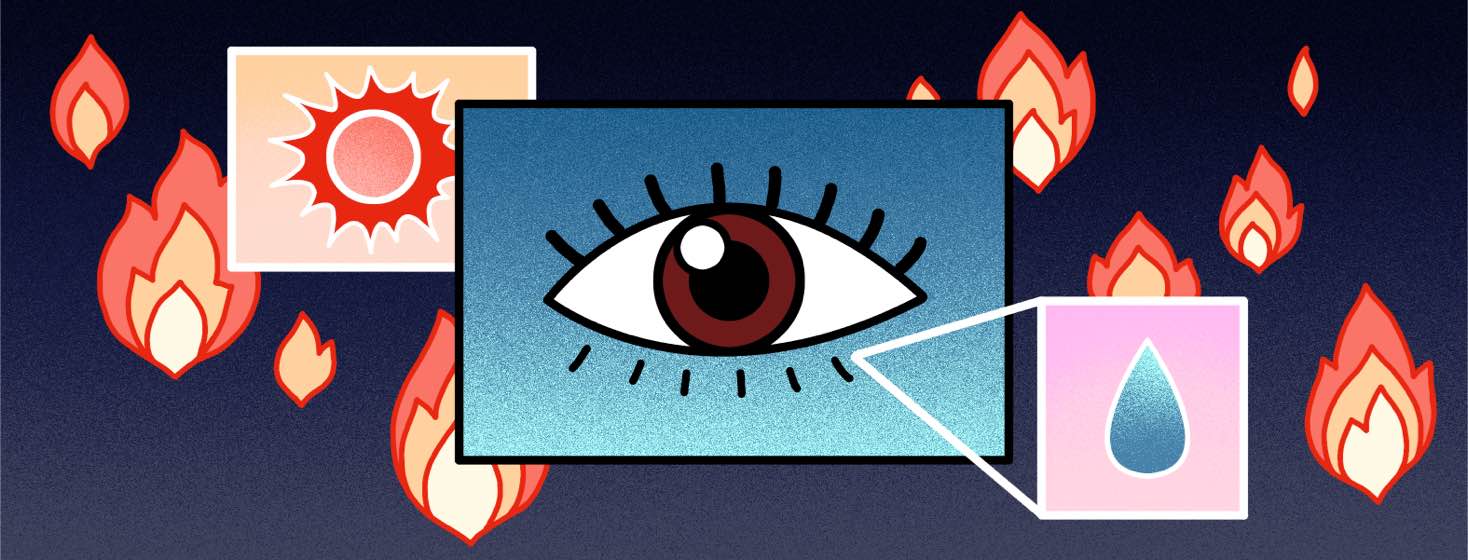What is Meibomian Gland Dysfunction?
Meibomian gland dysfunction (MGD) is a common condition that occurs when the meibomian glands in the eye do not produce enough oil. There are often no noticeable symptoms of MGD at first. But if MGD is not treated, it can lead to chronic dry eye (CDE) and other eye problems.1
What is a meibomian gland?
A meibomian gland is a tiny oil gland located along the edges of the eyelids. These glands release oil, also called meibum, onto the surface of the eye. The oil combines with the water from your tears to form the tear film that covers your eyes and keeps them moist. The tear film keeps eyes healthy and helps stop them from drying out.1
What are the symptoms of MGD?
The most common symptoms of MGD are similar to the common symptoms of chronic dry eye and other eye conditions. People with MGD may have:1,2
- Eye itching
- Eye burning
- Puffy eyelids
- Eye dryness
- Eye irritation
- Watery eyes
- Crust on lashes
- Eyelid redness and redness of the eyes
- Sensitivity to light
- Styes
- Blurry vision
Some symptoms that seem to be more specific to MGD include:3,4
- Loss of meibomian glands (also called meibomian gland dropout)
- Poor quality meibum (white/opaque, thick like toothpaste)
- Less oil on the eye
- Eyelid thickening/rounding
Your doctor will perform tests to see if your glands are working properly and to evaluate your symptoms.
What are the different types?
MGD is divided into 2 categories: low-delivery and high-delivery states.
In high-delivery states, the glands are making too much oil. This is also called hypersecretory MGD.5
In low-delivery states, the glands are not making enough oil. Low-delivery states are divided into 2 subcategories: obstructive and hyposecretory.5,6
In obstructive MGD, there is an obstruction (a blockage in the meibomian gland) or a change in the oil released from the meibomian glands. This chemical change reduces the quality of the tear film and causes irritation.6
In hyposecretory MGD, there is not a blockage, but the meibomian glands produce less oil. Obstructive MGD is the most common form of MGD.5
How is it different than chronic dry eye?
MGD is the most common cause of chronic dry eye. There is a lot of overlap in symptoms and treatment of both MGD and CDE. But if MGD is treated early, many symptoms can be avoided. It is also important to know the cause of CDE so it can be properly treated.3
MGD is chronic, which means it can keep coming back. This is why it is important for you to know how to best treat it. Many of the treatments for MGD are ones you can do at home.5
How is it treated?
At-home treatments for MGD include:1,7
- Warm compresses – Applying heat to the eyelids on a regular basis helps to melt the meibum and unclog glands. You can do this with a washcloth or rice bag. It should be done twice a day when you have active symptoms of MGD. You should still do this once a day as a preventative treatment even when you do not have symptoms.
- Lid hygiene – Eyelids are very delicate, so take care to be gentle as you clean the area. Using a mild soap or baby shampoo, gently scrub the lash line on the top and bottom of your eyes with a Q-tip, your finger, or a washcloth. This helps keep the eyelids clean and free of bacteria and other debris that may block your glands.
- Massage – This can be done while you are applying a warm compress or cleaning your eyelids. Gently apply pressure to your eyelids just above the eyelashes. Using your fingertip, roll up on the lower lid while looking up, then roll down on the upper lid while looking down. Do not overdo it. Too much massage can cause irritation.
Ask your doctor about treatments that can be performed in-office in addition to at-home treatments.

Join the conversation